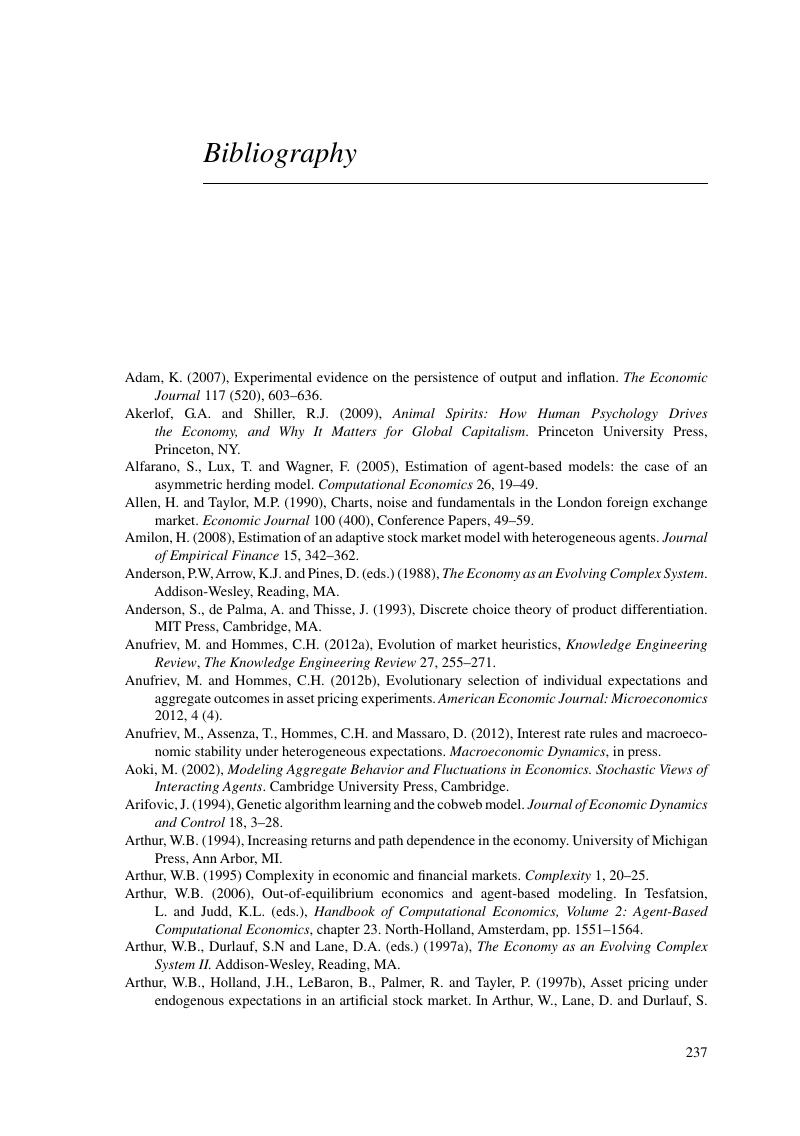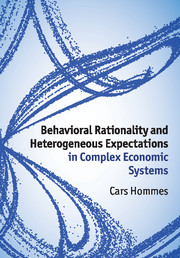Book contents
- Frontmatter
- Contents
- Figures
- Preface
- 1 Introduction
- 2 Bifurcations and chaos in 1-D systems
- 3 Bifurcations and strange attractors in 2-D systems
- 4 The nonlinear cobweb model
- 5 The cobweb model with heterogeneous expectations
- 6 An asset pricing model with heterogeneous beliefs
- 7 Empirical validation
- 8 Laboratory experiments
- Bibliography
- Index
- References
Bibliography
Published online by Cambridge University Press: 05 February 2013
- Frontmatter
- Contents
- Figures
- Preface
- 1 Introduction
- 2 Bifurcations and chaos in 1-D systems
- 3 Bifurcations and strange attractors in 2-D systems
- 4 The nonlinear cobweb model
- 5 The cobweb model with heterogeneous expectations
- 6 An asset pricing model with heterogeneous beliefs
- 7 Empirical validation
- 8 Laboratory experiments
- Bibliography
- Index
- References
Summary

- Type
- Chapter
- Information
- Publisher: Cambridge University PressPrint publication year: 2013



